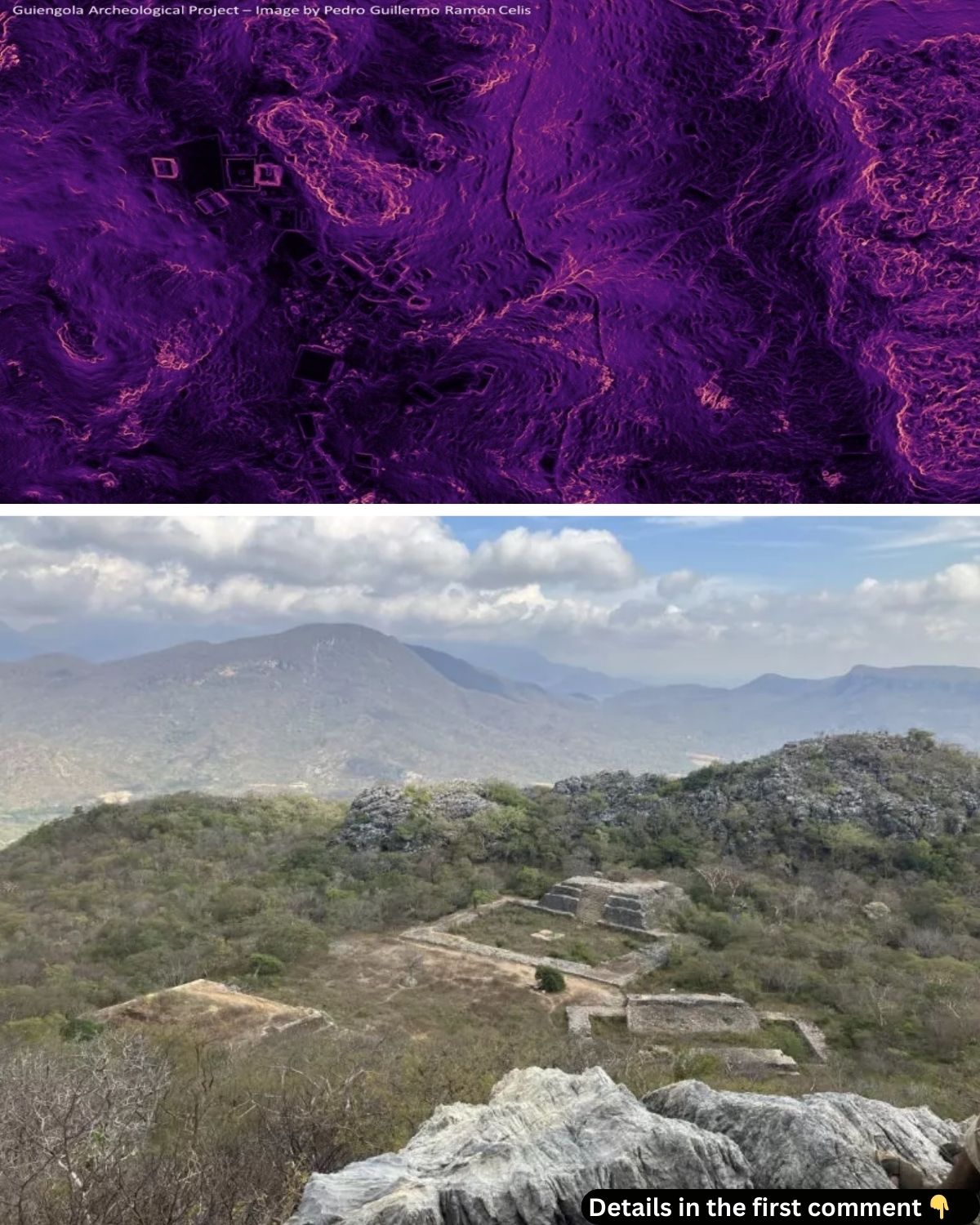Hidden deep within the tropical forests of southern Mexico, a forgotten city has emerged from centuries of obscurity. Guiengola, once thought to be just a military outpost, has revealed itself as a sprawling 15th-century Zapotec metropolis. With over 1,100 structures, temples, and defensive walls, this lost city offers an unprecedented glimpse into the sophisticated civilization that once thrived on the southern frontier of the Zapotec empire. Thanks to cutting-edge LiDAR technology, the secrets of Guiengola are now being uncovered, shedding light on a fascinating chapter of pre-Columbian history.
The Use of Cutting-Edge Technology: LiDAR Scanning
The discovery of Guiengola would not have been possible without the groundbreaking use of LiDAR (Light Detection and Ranging) technology. This laser-based technique uses pulses of light to scan the ground and produce detailed topographic maps, allowing researchers to uncover hidden features that would otherwise remain invisible beneath dense vegetation. Traditionally, archaeologists would have had to painstakingly search the site on foot for years, but LiDAR scanning allowed Celis and his team to uncover the city in a matter of hours. Flying over the site, the LiDAR data revealed an astonishing 360-hectare complex with over a thousand structures, showing the extent of the Zapotec city and its remarkable preservation.
LiDAR technology also illuminated the spatial organization of Guiengola, revealing the distribution of the different neighborhoods and public spaces. The scans showed how the civic and ceremonial areas were separated by defensive walls from the residential zones. This unique approach to mapping and excavation has revolutionized the way archaeologists study ancient sites, making it possible to identify and study areas that were once thought to be inaccessible.

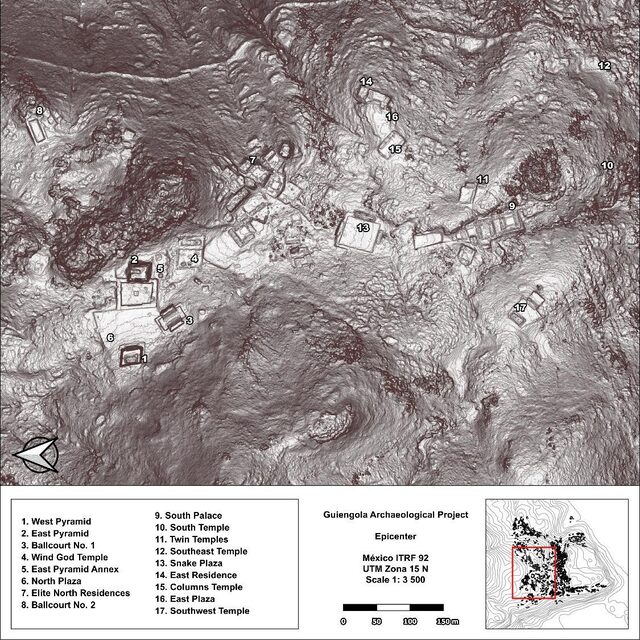
Video
Watch this video to learn about the fascinating discovery of a 600-year-old lost city in Mexico, perfectly preserved and frozen in time by scientists.
Guiengola: A City of Great Strategic Importance
Situated near the fork of the Waal and Rhine rivers, Guiengola was strategically located at the crossroads of the Zapotec civilization. In the late 15th century, the city was a key stronghold in the Zapotecs’ resistance against the Mexicas (Aztec Empire). One of the most remarkable events in the city’s history was the seven-month siege led by Aztec emperor Ahuizotl. Despite the overwhelming forces of the Aztec empire, the Zapotecs held their ground and managed to defend their city. This prolonged resistance demonstrated the strength and resilience of the Zapotec people, who had mastered both military strategy and political organization.
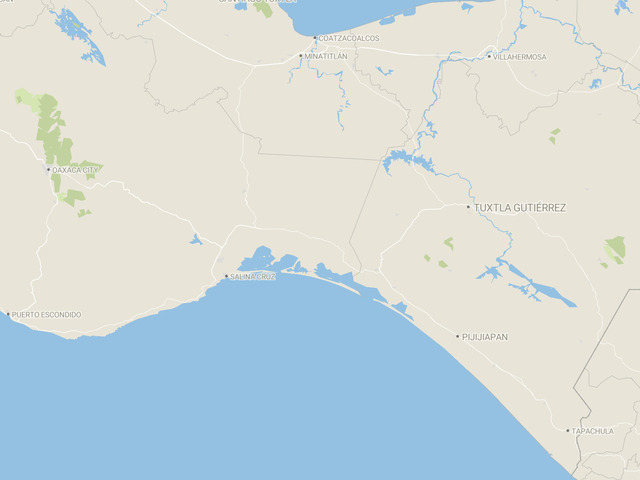
The Zapotecs, under their leadership in Guiengola, managed to gain near-total control of Oaxaca’s Pacific coast. This territorial expansion was achieved without the assistance of the Mexicas, highlighting the strategic importance of Guiengola. After the successful defense and expansion, the Zapotecs eventually abandoned the city in the late 15th century, just before the arrival of the Spanish.
The Layout and Structures of Guiengola
One of the most remarkable aspects of the Guiengola discovery is the scale and complexity of its architecture. The city covered an area of 360 hectares, and the ruins of more than 1,100 structures have been unearthed. These include public and private spaces, with intricate walls and plazas designed for both social and religious activities. The temples at Guiengola were particularly significant, with impressive structures dedicated to the gods Mercury, Jupiter-Serapis, and Hercules, as well as Iunones, a group of goddesses primarily worshipped in Roman Gaul.
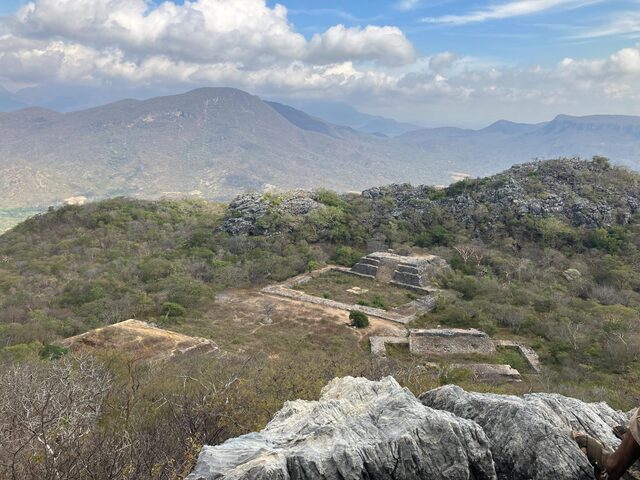
The city was also home to large ceremonial ball courts, where the Zapotecs likely engaged in the Mesoamerican ballgame, a highly ritualized sport that symbolized the struggle between life and death. The intricate designs of the ball courts suggest that the Zapotec elite had a significant influence on the religious and social life of the city.
The city’s fortifications, including the walls surrounding the city, served not only as protection but as a means of asserting power and control. The extensive walls, covering an area of 2.5 miles, were a clear indication of Guiengola’s importance as a military and political hub in Mesoamerica.
Life in Guiengola: Insights from Artifacts
The artifacts recovered from the site provide invaluable insights into the lives of the people who once inhabited Guiengola. Among the many finds were coins, jewelry, and personal items like enameled brooches, which may have been used to fasten clothing.
These objects offer a glimpse into the daily lives of the city’s residents, as well as the materials and technologies they employed. Many of the artifacts found were related to the city’s military nature, such as spear and lance tips, armor remnants, and horse harnesses.
The most striking discoveries were the remains of statues, including a limestone head that may represent the chief Roman god Jupiter. These statues, along with the various altars found at the site, suggest that Guiengola was a site of significant cultural and religious importance. The altars, used for rituals and sacrifices, were dedicated to gods and goddesses, showing the Zapotecs’ devotion to their deities and their belief in the power of the divine.
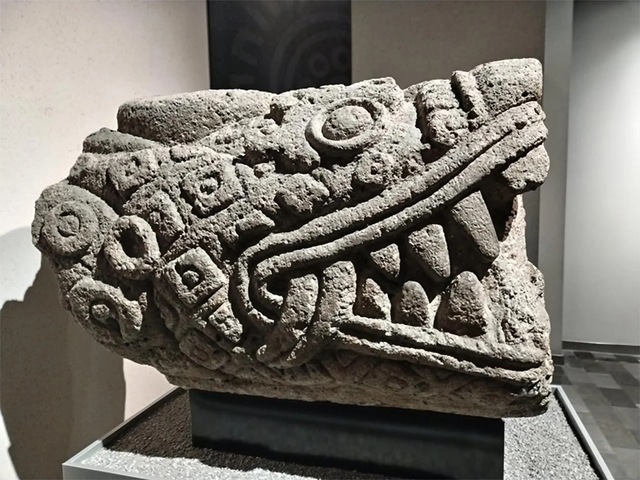
The Abandonment of Guiengola
As fascinating as the discovery of Guiengola is, perhaps the most poignant aspect of the city’s history is its abandonment. According to Ramón Celis, the city was left by its inhabitants just before the arrival of the Spanish, with the Zapotecs relocating to nearby Tehuantepec.
This move was likely prompted by the more fertile land and the access to running water that Tehuantepec offered, making it a more viable location for a growing population. This relocation also marked the beginning of the end for the Zapotecs’ dominance in the region, as the Spanish would soon arrive, bringing with them profound changes to Mesoamerican culture.
Guiengola: A Snapshot of Pre-Colonial Mesoamerica
Guiengola stands as a frozen snapshot of pre-colonial Mesoamerican life, preserved in time long before the cultural transformations brought by the Spanish. The city’s remarkable preservation, with houses still standing and intact structures, offers an unparalleled opportunity to study the social, political, and religious life of the Zapotecs. The artifacts and architecture of Guiengola highlight the sophistication of this ancient civilization, which had developed complex social structures, military strategies, and religious practices long before European contact.
Future Research and Excavation Plans
While the LiDAR scans have provided a comprehensive overview of Guiengola, Ramón Celis and his team are far from finished. Future research will involve in-depth studies of the 1,170 structures mapped by the LiDAR scan, with the aim of uncovering more information about the social and political organization of the Zapotecs. Ramón Celis hopes that these future studies will shed light on how the Zapotecs maintained their identity and connection to their homeland in the face of outside pressures, particularly from the Mexicas and later the Spanish.
In the coming years, Ramón Celis plans to expand his fieldwork and continue his use of remote sensing technologies, which will allow for a deeper understanding of Guiengola without disturbing the site. This non-invasive approach to archaeology will be critical in preserving the site while uncovering more of its secrets.
Video
Check out this video from BBC News to learn about the accidental discovery of an ancient Mayan city hidden in the Mexican jungle, revealing incredible archaeological secrets.
Conclusion: A New Chapter in Mesoamerican Archaeology
The discovery of Guiengola has opened a new chapter in the study of Mesoamerican archaeology. With its rich history, well-preserved structures, and significant artifacts, Guiengola offers a rare window into the past, providing insights into the lives of the Zapotec people at a time when their civilization was at its peak.
As further research unfolds, Guiengola will continue to contribute to our understanding of ancient civilizations, their cultural practices, and their resilience in the face of external pressures. This discovery stands as a testament to the enduring legacy of the Zapotecs and their place in the history of Mesoamerica.
